In this blog post, I will be explaining the four most common lighting patterns for studio portrait photography. The four patterns I will be talking about today are rembrandt, loop, split, and butterfly lighting.
Rembrandt Lighting:
This lighting pattern is characterized by a dramatic triangle on the opposite side of the studio light, which touches with the shadow on the side of the face. Here is an example:

You can set this up by placing your studio light 45° from the subject, which casts the shadow onto their face. Here is a nice graphic that I made that showcases this well.
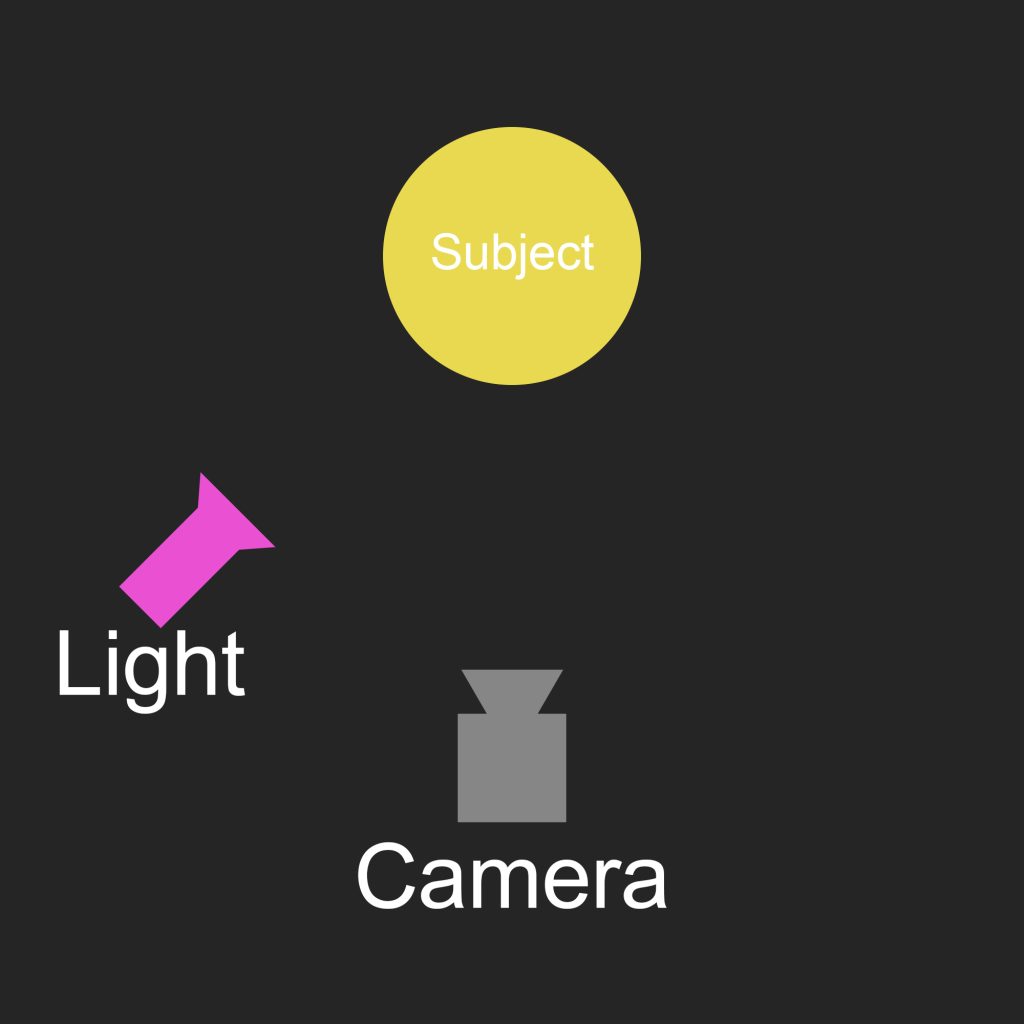
Loop Lighting:
Loop lighting is very similar to rembrandt lighting, but it is different in the way that the nose shadow does not reach all the way to the cheek, but only a slight bit out. Example:
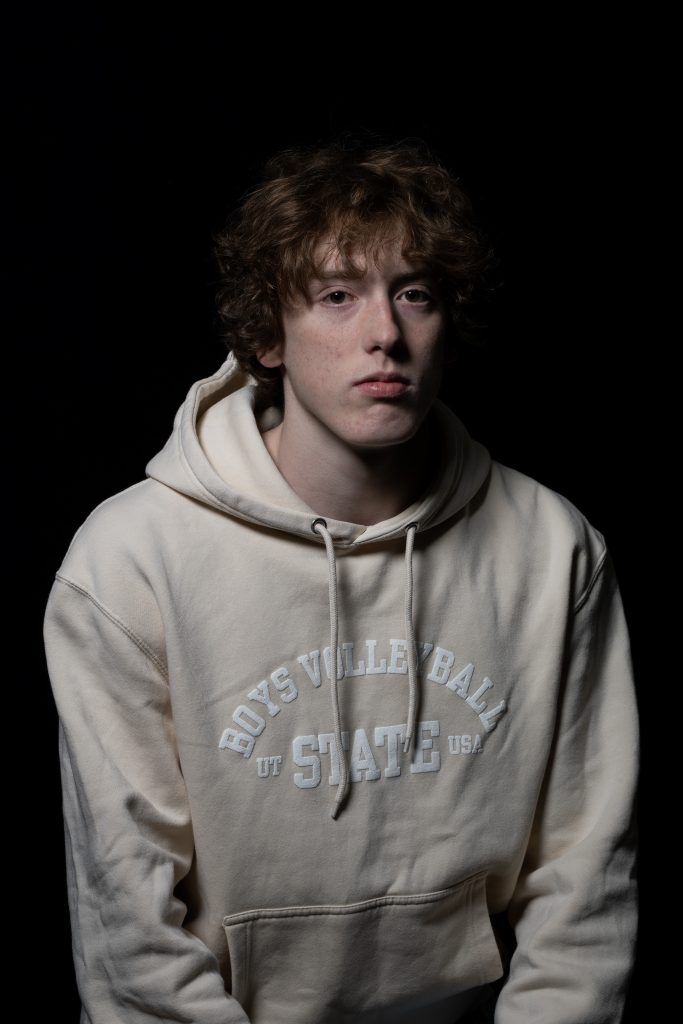
The setup for loop lighting is also similar to rembrandt, the difference being that you raise the light up so it is facing downwards to the model instead of eye level.
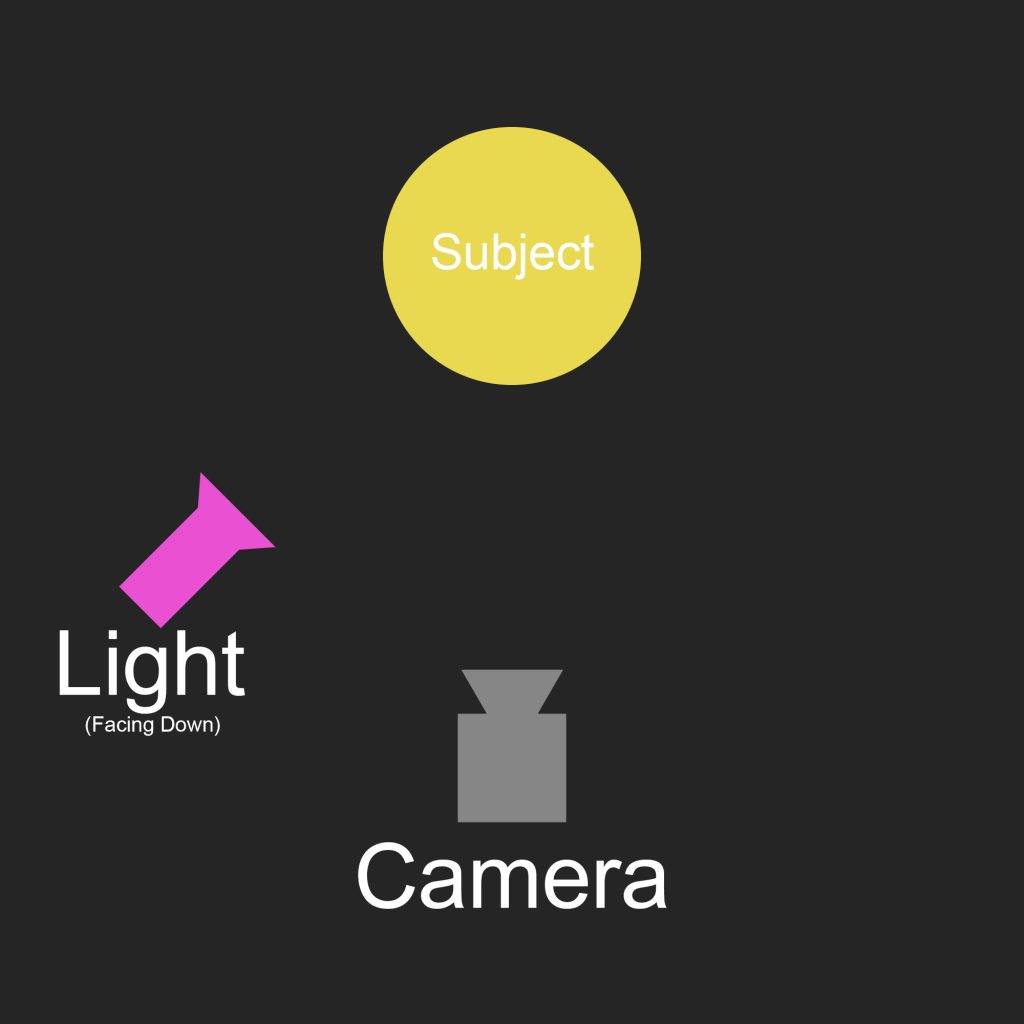
Split Lighting:
The next lighting setup is split lighting. This pattern is characterized by having one side light, and one side dark on the model’s face, splitting right down the middle.
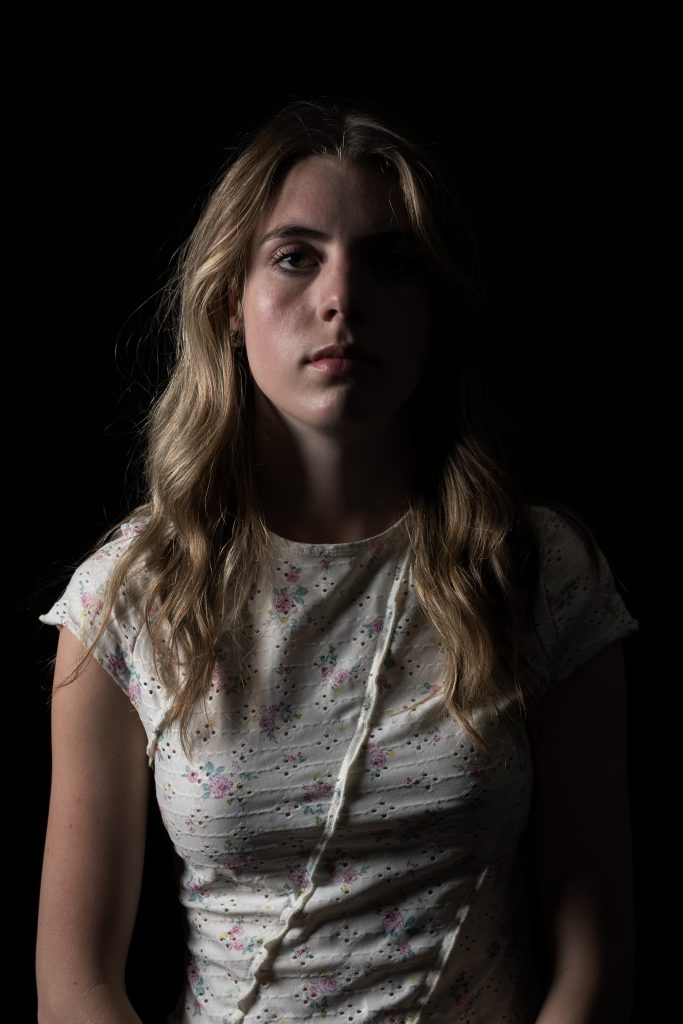
The way that you can achieve this setup is by having the light at head level of the model, facing perpendicular into the subjects face, illuminating the side it is on and casting a dramatic shadow.

Butterfly Lighting:
The last basic light pattern that I will be discussing today is butterfly lighting. Butterfly lighting is the hardest to achieve, because it has a specific shadow pattern. This pattern is having shadows on both sides of the head, and a small butterfly wing pattern on the bottom of the model’s nose. Here are two examples.
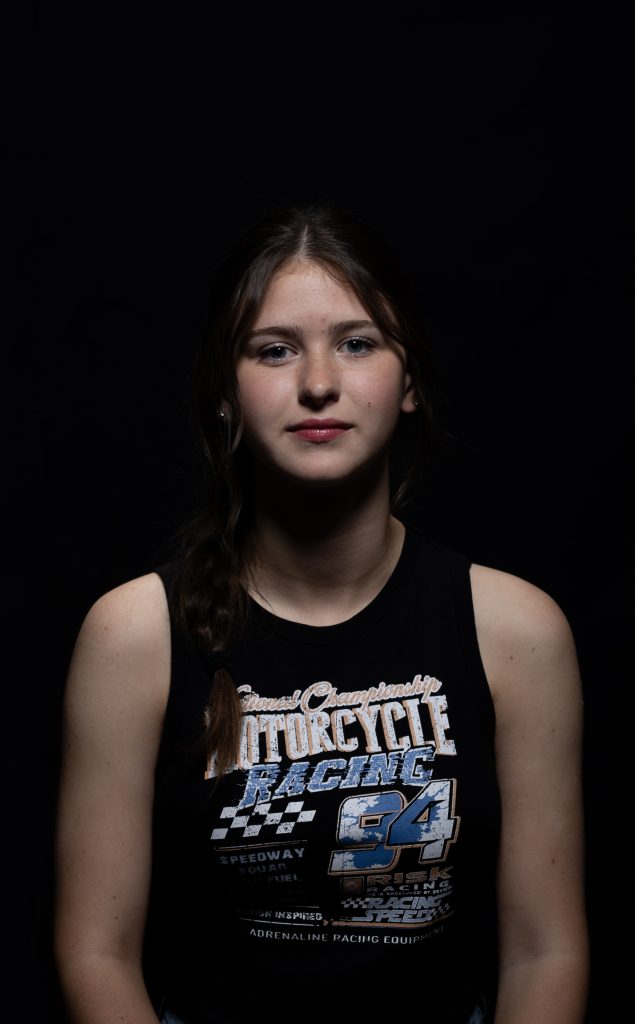
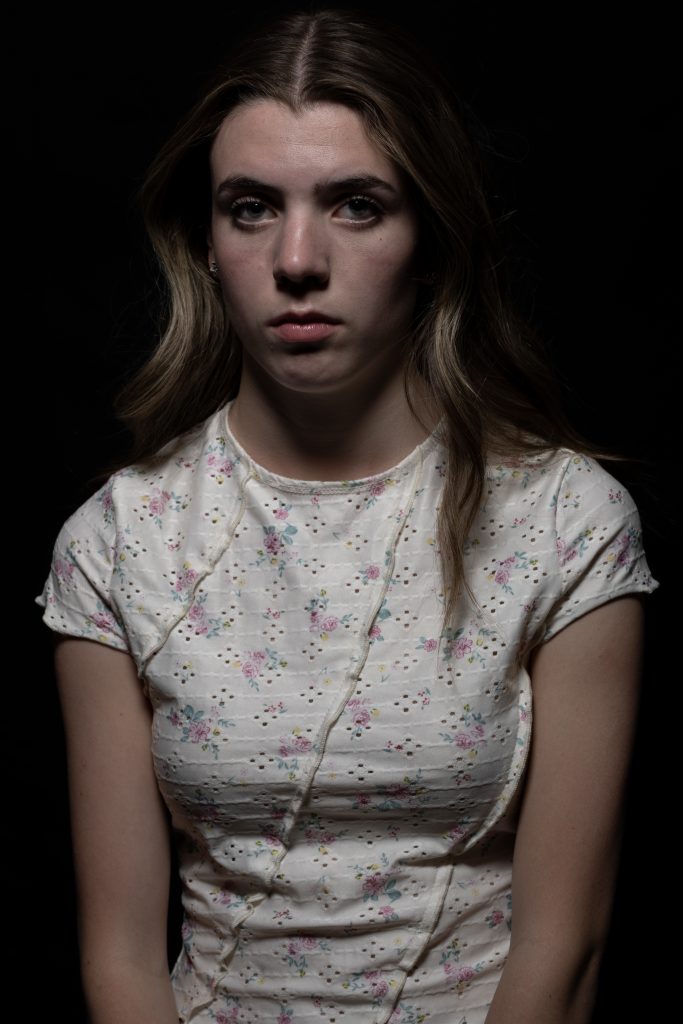
The easiest way to achieve this affect is to place the light around a foot above the model’s head, pointing it down towards their face. You can turn off the lights in the room and turn on the modeling light (the ambient bulb), and position it so the shadows are set perfectly.

If you enjoyed this post, consider following my blog and following me on Instagram
Leave a Reply